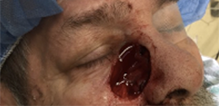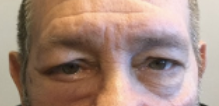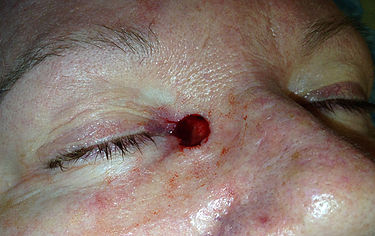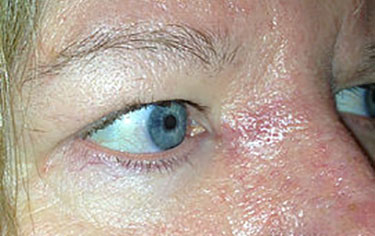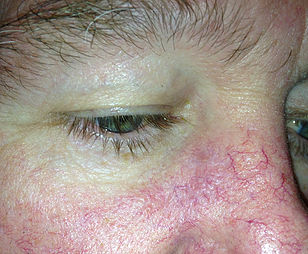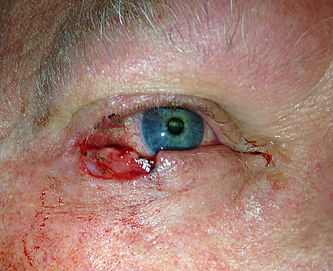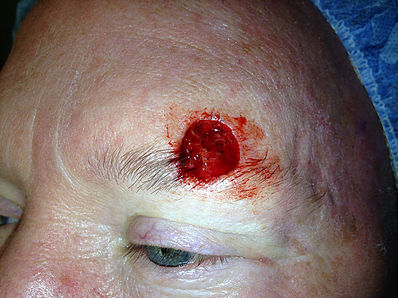Skin cancer of the eyelids and face
Reconstruction of a Large Right Medial Canthal
RECONSTRUCTION OF A LARGE RIGHT LOWER EYELID DEFECT
Reconstruction of a Right Medial Canthal Defect
Reconstruction Right Medial Canthal Defect
Reconstruction of a Right Lower Eyelid Defect
Reconstruction of Left Brow Defect
Skin cancer in light-skinned people is relatively common. In order to remove the cancer, a dermatology surgeon (MOHS surgeon) may remove the cancer and ask your doctor to repair the defect (missing tissue).
Repair of the missing skin tissue is usually done in an operating room. If the defect is small, it may be done under simple local anesthesia. However, if the defect is large, it may require general anesthesia. Two basic techniques are used: Flaps and Grafts. A skin graft is done by removing skin in a normal spot and stitching it to fill in the missing tissue from the skin cancer removal surgery. A flap is done by incising (cutting) and stretching the skin around the defect to fill in the hole.
The cosmetic results of the skin cancer repair surgery depend upon the patient’s severity (size) and location of the defect, the patient’s unique anatomy and appearance goals. Skin cancer defect surgery is not considered cosmetic surgery but most patients feel they look better after the cancer is removed and they have healed. The goal of this surgery is to rid the patient of the cancer and give them the very best cosmetic (normal) appearance as possible.
In some patients (bed-ridden patients that are unable to undergo surgery or patients that refuse surgery) the skin cancer can be treated with topical medicine and treatments (freezing therapy) or even radiation. The downside of this type of treatment is that it is impossible to tell if all the cancer cells are dead. The skin cancer may look as if it is gone and then return months or years later. Surgery is considered to be the gold standard.
